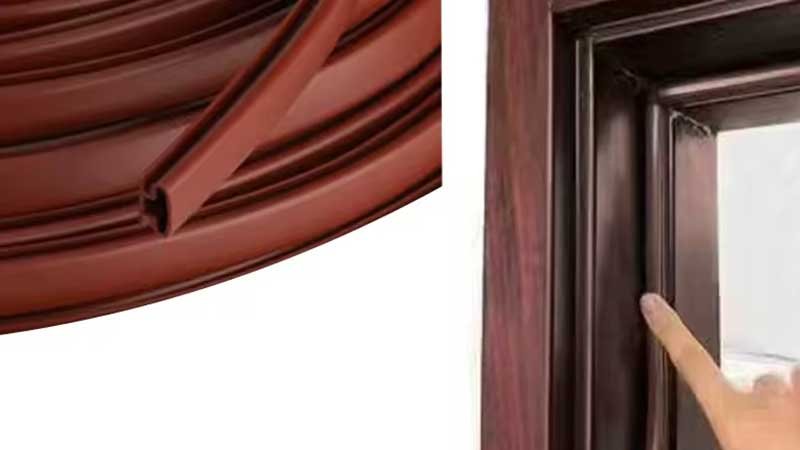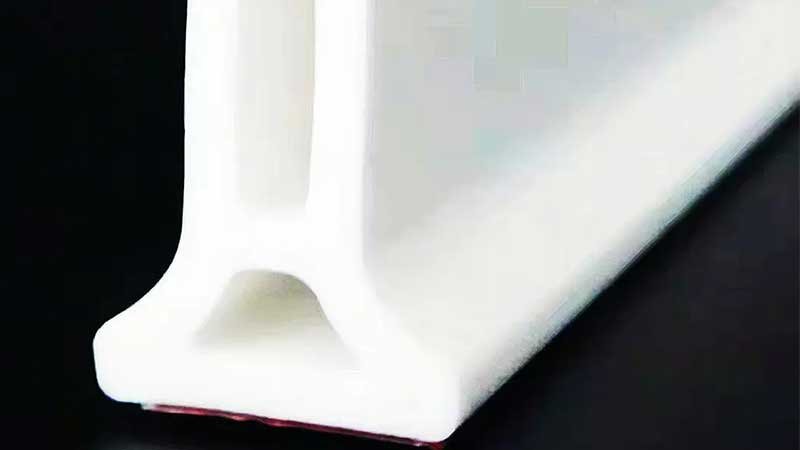Waterproofing is essential in various fields—whether you’re in construction, automotive industries, or simply working on a DIY project. Imagine investing hours into a task, only to have it compromised by leaks or moisture damage. Choosing the wrong materials can lead to expensive repairs, safety issues, and unnecessary frustration. Silicone strips have emerged as a promising solution for keeping your projects watertight. But do they live up to the hype?
In short, yes—silicone strips are known for their excellent waterproofing abilities. They resist water, chemicals, and extreme temperatures, making them ideal for sealing joints, gaps, and edges. Their flexibility allows them to conform to different shapes and surfaces, ensuring a tight seal. But how do they truly stack up against other waterproofing materials? Let’s explore their capabilities in more detail.
Curious about how silicone strips perform compared to other materials? Keep reading to find out.
What Makes Silicone Strips Effective for Waterproofing?
Inherent Waterproof Nature
One of the key reasons silicone strips are so effective for waterproofing is their inherent waterproof nature. Unlike other materials that may degrade or become porous over time, silicone remains intact, providing a long-lasting seal. This durability is largely due to its molecular structure, which is impermeable to water and resistant to UV radiation. As a result, silicone strips offer superior protection against water damage, reducing the need for repairs over time.
Exceptional Flexibility
Silicone strips are also known for their exceptional flexibility. This flexibility is crucial because it allows the strip to maintain consistent contact with surfaces that may expand, contract, or shift due to temperature changes or vibrations. For example, in the automotive industry, silicone strips are commonly used in car doors and windows to prevent water leaks. They adapt to the movement of the vehicle, ensuring a tight seal and keeping the interior dry.
Chemical Inertness
Another significant advantage of silicone strips is their chemical inertness. Silicone does not react with other materials or degrade when exposed to chemicals, which is particularly important in industrial settings. Whether in a chemical plant or a kitchen that encounters frequent exposure to cleaning agents, silicone strips maintain their integrity, offering reliable waterproofing over time.
Minimal Water Absorption
Research indicates that silicone strips have a water absorption rate of less than 1%, which means they absorb very little water even under prolonged exposure. This low absorption rate gives silicone strips a significant advantage over materials like rubber, which can absorb moisture and deteriorate over time, compromising their waterproofing capabilities.

Silicone Strips vs. Other Waterproofing Materials
When compared to other materials like EPDM rubber, neoprene, and polyurethane, silicone strips often come out on top in terms of durability and effectiveness.
Here is a table provides a quick and easy-to-understand comparison of the key properties of silicone strips against other common waterproofing materials.
| Property | Silicone Strips | EPDM Rubber | Neoprene | Polyurethane |
|---|---|---|---|---|
| Water Resistance | Excellent | Good | Good | Good |
| Flexibility | High | Moderate | Moderate | Low |
| Temperature Resistance | -55°C to +300°C | -40°C to +120°C | -40°C to +120°C | -50°C to +80°C |
| UV Resistance | Excellent | Good | Fair | Poor |
| Chemical Resistance | Excellent | Good | Excellent | Fair |
| Durability | Long-lasting | Good | Good | Moderate |
| Ease of Application | Easy (Flexible, conforms to surfaces) | Moderate | Moderate | Difficult (Prone to cracking) |
| Cost | Higher | Moderate | Moderate | Lower |
| Mold & Mildew Resistance | Excellent | Fair | Fair | Poor |
EPDM rubber, for example, is also resistant to water but is less flexible than silicone, making it harder to apply in certain situations.
Neoprene offers good chemical resistance but lacks the same level of flexibility and UV resistance as silicone.
Polyurethane, another common waterproofing material, is more rigid and can crack under stress, leading to potential leaks.
Studies show that silicone strips maintain their waterproofing capabilities even after years of exposure to the elements. This long-term durability is a crucial factor for industries that require reliable sealing solutions, such as aerospace, marine, and automotive industries.
Can Silicone Strips Be Used in Extreme Conditions?
Silicone strips are exceptionally well-suited for extreme conditions. Whether dealing with the freezing temperatures of the Arctic or the scorching heat of a desert, silicone strips perform reliably. Their thermal stability ensures they do not become brittle in cold weather or soften in high heat, a common issue with other materials.
Resistance to Ozone and UV Radiation
In addition to their temperature resistance, silicone strips are highly resistant to ozone and UV radiation. This makes them ideal for outdoor applications where materials are frequently exposed to sunlight and air pollutants over long periods. Unlike some materials that may crack or degrade when exposed to UV rays, silicone strips remain flexible and effective, maintaining their integrity even under harsh conditions.
Mold and Mildew Resistance
Another significant advantage of silicone strips is their resistance to mold and mildew. In damp environments like bathrooms or kitchens, mold growth can be a major concern. However, because silicone is non-porous, it does not provide a breeding ground for mold, ensuring that sealed areas remain hygienic and free from mold-related issues.

Limitations to Using Silicone Strips for Waterproofing
Higher Cost Compared to Other Materials
While silicone strips offer many advantages, one of the primary limitations is their higher cost compared to other waterproofing materials such as rubber or neoprene. This increased expense may be a significant consideration for projects with tight budgets, especially if large quantities of silicone strips are required.
Bonding Challenges with Certain Surfaces
Another potential drawback of silicone strips is the challenge of bonding with certain materials. For example, silicone may not adhere well to oily or highly porous surfaces without a primer. In such cases, additional surface preparation is necessary to ensure a strong and secure bond, which can add time and complexity to your project.
Compatibility with Specific Chemicals
Lastly, while silicone is generally resistant to a wide range of chemicals, it may not be compatible with certain solvents or oils. It’s crucial to verify the compatibility of silicone with other materials and chemicals involved in your project to prevent any issues that could compromise the waterproofing effectiveness.
Conclusion
Silicone strips offer a robust, durable, and flexible solution for waterproofing in a wide range of applications. Their resistance to water, extreme temperatures, UV radiation, and chemicals makes them an excellent choice for industries and DIY projects alike.
Overall, silicone strips are a top contender for anyone seeking dependable and long-lasting waterproofing. Whether you’re sealing a window, protecting electronic components, or ensuring that your car doors stay watertight, silicone strips offer the confidence that your project will stay protected from moisture and environmental elements.
Related Post:
Silicone Rubber Strip Manufacturing
Silicone Rubber Strip Thermal Stability